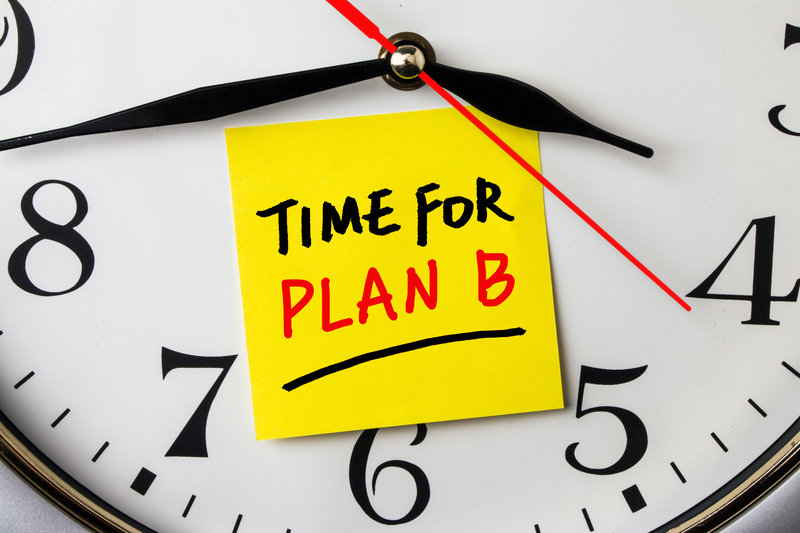Your Complete Handbook to Relocating Bed and Mattress Safely
Posted on 24/06/2025
Relocating to a new home can be both exciting and stressful, especially when it comes to moving bulky furniture like beds and mattresses. Beds are often the centerpiece of our bedrooms, and ensuring their safe transportation is essential for a comfortable transition into your new space. This comprehensive handbook covers everything you need to know for safely relocating your bed and mattress, minimizing damage, and making the process as smooth as possible.
Why Properly Moving Your Bed and Mattress Matters
Moving a bed and mattress involves more than just shifting heavy items from one location to another. Beds and mattresses are significant investments, and improper handling can lead to:
- Dented bed frames
- Torn or stained mattresses
- Structural damage
- Costly replacements or repairs
Additionally, mattresses are susceptible to dirt, moisture, and bending, which may compromise their comfort and lifespan. That's why relocating bed and mattress safely is vital, ensuring you preserve both their function and value.

Essential Preparations Before Moving Your Bed and Mattress
1. Plan Ahead
Careful planning is the cornerstone of a successful move. Start by:
- Measuring doorways, hallways, and stairwells in both your current and new homes to ensure the bed-frame and mattress can pass through safely.
- Deciding if you'll move the bed and mattress yourself or hire a professional moving service.
- Scheduling the move during a time of day when there's adequate light and help available, if necessary.
- Giving yourself ample time--rushing increases the risk of accidents and damage.
2. Gather Necessary Materials
To ensure your move is efficient and secure, have the following supplies ready:
- Moving blankets or furniture pads - to protect frames and prevent scratches.
- Mattress bags or covers - to shield the mattress from dust, moisture, and stains.
- Plastic wrap and packing tape - to keep covers secure and bundle loose parts.
- Tool kit (screwdriver, wrench) - for disassembling and reassembling the bed frame.
- Moving straps or ropes - offer support when lifting heavy items.
- Gloves - for better grip and hand protection.
- Labels and zip-lock bags - for organizing screws, bolts, and other hardware.
3. Clean Before You Move
Moving is a perfect time to give your bedroom essentials a good cleaning. Vacuum the mattress to remove dust mites and consider spot-cleaning for stains. Wipe down the bed frame, especially joints and corners that often accumulate dirt. This not only keeps your belongings fresh but also prevents transporting dirt and allergens to your new home.
Step-By-Step Guide: How to Move a Bed Safely
Disassembly: The Key to Success
Most beds, especially large ones like queens and kings, must be taken apart to move them safely. Here's how to go about it:
- Remove all bedding - This includes sheets, pillows, comforters, and mattress toppers. Pack them separately in bags or boxes.
- Disassemble the headboard and footboard - Use your toolkit to carefully unscrew these pieces. As you remove hardware, immediately place screws and bolts in labeled bags to prevent loss.
- Take apart any side rails or supports - Keep similar parts grouped together.
- Wrap each piece in moving blankets or bubble wrap - Secure with tape, but avoid sticking tape directly on wood or fabric to prevent residue.
- Mark all pieces clearly - Use masking tape and a marker so you'll know exactly how to reassemble them later.
Handling the Mattress
Mattress relocation can be tricky because of its size, flexibility, and vulnerability. Here's what to do:
- Slide the mattress into a mattress bag and seal it tightly to provide a barrier against dirt and moisture.
- Do not bend or fold the mattress unless it's designed to - This is crucial for memory foam or hybrid models, as improper folding can cause irreversible damage.
- If you're navigating narrow corridors or stairs, carefully maneuver the mattress by tipping it on its side and moving slowly, making sure not to scrape walls or the floor.
Lifting and Carrying: Use Proper Technique
Incorrect lifting can lead to injuries and damage. Remember:
- Always lift with your legs, not your back.
- Coordinate with your moving partner to lift simultaneously.
- Use moving straps for heavy frames or large mattresses.
- If the item is too heavy or awkward, don't hesitate to ask for help.
Transporting Your Bed and Mattress Safely
Loading the Bed Frame
Once the frame is disassembled and wrapped:
- Lay larger pieces flat in the moving truck to prevent warping.
- If possible, stack components so that the heaviest and sturdiest sections are on the bottom.
- Cushion space around bed parts with soft items like pillows or blankets to absorb vibrations and shocks.
Loading the Mattress
- Keep the mattress upright against a wall of the truck to save space and maintain its shape.
- Secure with ropes or moving straps to prevent shifting during transit.
- If you're moving in a personal vehicle, never strap the mattress to the roof - it's unsafe and can destroy the mattress or cause accidents.
Travel Considerations
When relocating beds and mattresses over long distances, plan for:
- Weather protection - Moisture is a leading cause of mattress and frame damage, so double-check that everything is sealed and protected.
- Timing - Avoid high-traffic periods to reduce travel time and minimize the risk of damage.
- Safe driving - Remember that heavy loads affect handling and stopping distances. Drive carefully.
Unloading and Setting Up at Your New Home
Careful Unloading
- Remove items from the truck in the reverse order they went in - usually mattress first, then frame components.
- Inspect everything for damage before moving into your new space.
- If possible, wipe down items once more, especially if exposed to dust during the move.
Reassembling the Bed
- Lay out all frame parts and hardware to verify nothing is missing.
- Follow your labeling system to quickly identify each component.
- First, assemble the main frame, then attach the headboard and footboard.
- Tighten all bolts and screws, but be careful not to over-tighten and risk stripping them.
- Place your mattress on the frame, remove any protective covers, and check that everything is sturdy and level.
Tips for Protecting Your Mattress During a Move
1. Invest in a Quality Mattress Bag
A waterproof, heavy-duty mattress bag is essential for keeping out dirt, moisture, and bugs during transit. These are inexpensive and well worth the protection return.
2. Avoid Permanent Folding
Bending or folding can ruin the integrity of many mattress types, especially innerspring and hybrids. Only fold if the design allows.
3. Avoid Dragging
Never drag a mattress along the ground--it increases the risk of tears and staining. It's better to lift with two or more people or use a dolly for added ease.
4. Store Upright - Not Long-term
Storing the mattress upright for the duration of your move is helpful, but don't leave it that way for days or weeks as this can cause the materials to sag.
Common Mistakes to Avoid When Relocating Beds and Mattresses
While moving your bed set seems straightforward, these common errors can prove costly:
- Packing bed hardware haphazardly, leading to lost nuts, bolts, or connectors.
- Failing to measure spaces ahead of time and finding the bed frame won't fit through doors.
- Using inadequate protection, resulting in scratches and dents.
- Transporting a mattress on top of a car, which can be dangerous and illegal in some areas.
- Working alone with heavy items, increasing the risk of injury and accidents.
Should You Hire Professional Movers?
If your bedroom furniture is especially valuable, bulky, or you're facing a challenging move (like multiple flights of stairs), hiring professional movers can be a wise decision. Experienced moving crews have the expertise and equipment necessary to relocate beds and mattresses swiftly and securely.
Professional movers often offer:
- Insurance for added peace of mind
- Custom packaging and crating for luxury pieces
- Efficient loading and unloading
- Disassembly and reassembly services
Weigh the added cost against the value of your time, effort, and the peace of mind you'll gain.

Eco-Friendly Disposal and Upgrading
If moving to a new home also means upgrading, consider sustainable disposal of your old mattress and frame:
- Donate to local shelters or charities if pieces are still in good condition.
- Check for mattress recycling programs in your area.
- Arrange for pickup with municipal bulk waste services.
Conclusion: A Safe Move Starts With Preparation
Relocating your bed and mattress doesn't have to be stressful. With proper planning, the right tools, and attention to detail, you can safely move your bedroom essentials without complications or damages. Use this complete handbook as your step-by-step resource, and embrace your new home with comfort and peace of mind. Safe travels!
Frequently Asked Questions
- Can you move a mattress by yourself?
While it's possible to move smaller mattresses alone, a queen or king mattress is best handled by two people to prevent injury and avoid damage. - What is the safest way to carry a bed frame?
Disassemble the frame first, wrap each component, and lift with your legs using proper moving straps or help from a friend. - How do you protect your mattress during a move?
Use a waterproof mattress cover and avoid folding it unless designed for that purpose.
By following the guidelines outlined in this complete handbook to relocating bed and mattress safely, you ensure a smoother, safer, and more efficient moving experience.







